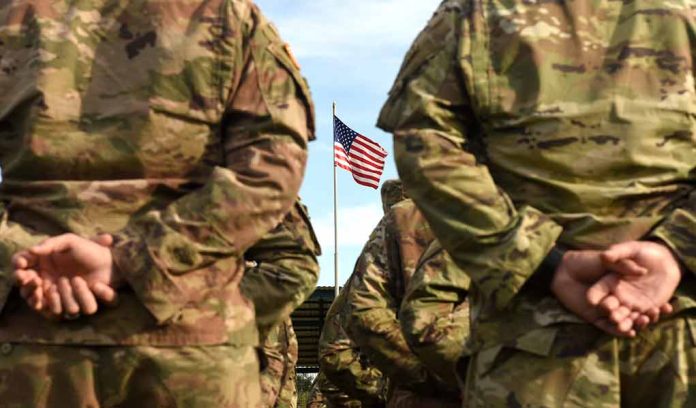
After nearly 80 years, Army Private Jeremiah P. Mahoney’s remains have been identified, bringing closure to a long-lost World War II hero’s story.
At a Glance
- Private Jeremiah P. Mahoney, 19, from Chicago, was killed in France in January 1945.
- His remains were recently identified using DNA samples from family members.
- Mahoney was awarded the Bronze Star Medal and Purple Heart for his service.
- He will be buried with full military honors at Arlington National Cemetery in spring 2025.
- Over 72,000 American soldiers from World War II remain unaccounted for.
A Soldier’s Journey Home
Private Jeremiah P. Mahoney, a brave 19-year-old Army private from Chicago, has finally been accounted for after nearly eight decades. Mahoney was killed in action during a German counterattack near Reipertswiller, France, in January 1945. His story is a testament to the enduring commitment to bring every American soldier home.
Mahoney’s remains were not immediately recovered after his death, leading the War Department to issue a presumptive finding of death in January 1946. For years, his family lived with uncertainty about his final resting place. In 1949, he was buried as an “unknown” soldier in the Ardennes American Cemetery in Belgium, where he remained unidentified for decades.
Army private who died in WWII identified almost 80 years after his death https://t.co/nYtz1b8nMi
— The Independent (@Independent) November 11, 2024
A Life of Service and Sacrifice
Born and raised in Chicago, Jeremiah Mahoney graduated from St. Ignatius College Prep in 1943 before answering the call to serve his country. His military service took him to Italy and France, where he participated in Operation Dragoon. Mahoney’s bravery and dedication to duty earned him both the Bronze Star Medal and Purple Heart.
“Shells were falling,” a soldier reportedly wrote to Mahoney’s mother. “One came close and this fellow jumped into the foxhole on top of Mahoney. Then, at once, another one came in bursting in a tree, spraying shrapnel downward into this open half-finished hole.”
This vivid account, shared by a fellow soldier, paints a harrowing picture of Mahoney’s final moments and the brutal realities of war.
Scientific Advances Bring Closure
The identification of Private Mahoney’s remains was made possible by recent advances in forensic techniques and DNA testing. The Defense P.O.W./M.I.A. Accounting Agency (D.P.A.A.) used DNA samples from Mahoney’s family to confirm his identity. This breakthrough highlights the importance of continued efforts to identify and repatriate fallen soldiers.
“For the first time in my life, I had a familiarity with this long-lost uncle,” Jerry Mannell said of Mahoney. “There was a sense of closure and relief. But there was a larger sense of remorse for his immediate family not having this information before they passed.”
Mannell’s words underscore the emotional impact of such identifications on families, even generations later. The closure brought by Mahoney’s identification serves as a poignant reminder of the sacrifices made by countless young Americans during World War II.
A Nation’s Commitment to Its Fallen Heroes
Private Mahoney’s story is part of a larger, ongoing effort to account for all American service members lost in conflicts. With over 72,000 soldiers still unaccounted for from World War II alone, the work of agencies like the D.P.A.A. remains crucial. These efforts not only bring closure to families but also honor the promise to leave no soldier behind.
“Kudos to the Army for sticking with this for 75 years,” Mannell said. “So they truly leave no soldier behind.”
As Private Jeremiah P. Mahoney prepares for his final journey home, to be buried with full military honors at Arlington National Cemetery in the spring of 2025, his story serves as a powerful reminder of the cost of freedom and the enduring commitment to honor those who paid the ultimate price. It stands as a testament to American values and the unwavering resolve to account for every fallen hero, no matter how long it takes.
Sources
- Army Private Is Identified Almost 80 Years After Death in World War II
- Army private who died in WWII identified almost 80 years after his death

















